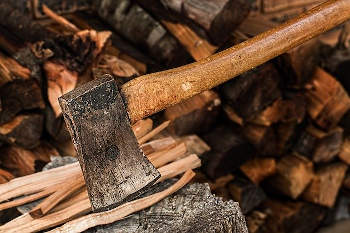Ripping Blades
Ripping, or cutting with the grain is an easy cut. Before there were motorized saws, you had hand saws with 10 or less large teeth for ripping plywood sheets as fast and straight as possible. The saw “rips” the wood apart. It is easier than a crosscut because you are cutting with the grain of the wood.

Picture swinging an axe into the top of a log that is standing up. When you hit the log, the axe is ripping the wood apart through sheer force. But you can hit the log without much force and still split the wood. In this example, you’re splitting the wood with the grain. You can pull off fibers of wood where the axe has split it. It’s possible to pull off a single wood fiber that is the entire length of the wood. That is the idea behind rip cuts- you cut with the grain to minimize effort.

Rip blades are optimized to cut through wood with, or along the grain. Typically used for initial cuts, they clear long fibers of wood where there is less resistance than when cutting across the grain. Using a flat top grind (FTG) tooth pattern, low tooth count (10T- 24T), and a hook angle of at least 20 degrees, a ripping blade cuts through wood along the grain quickly and efficiently with a high feed rate.
